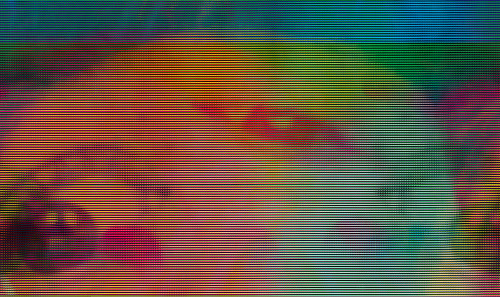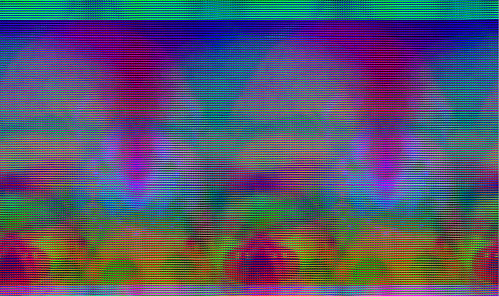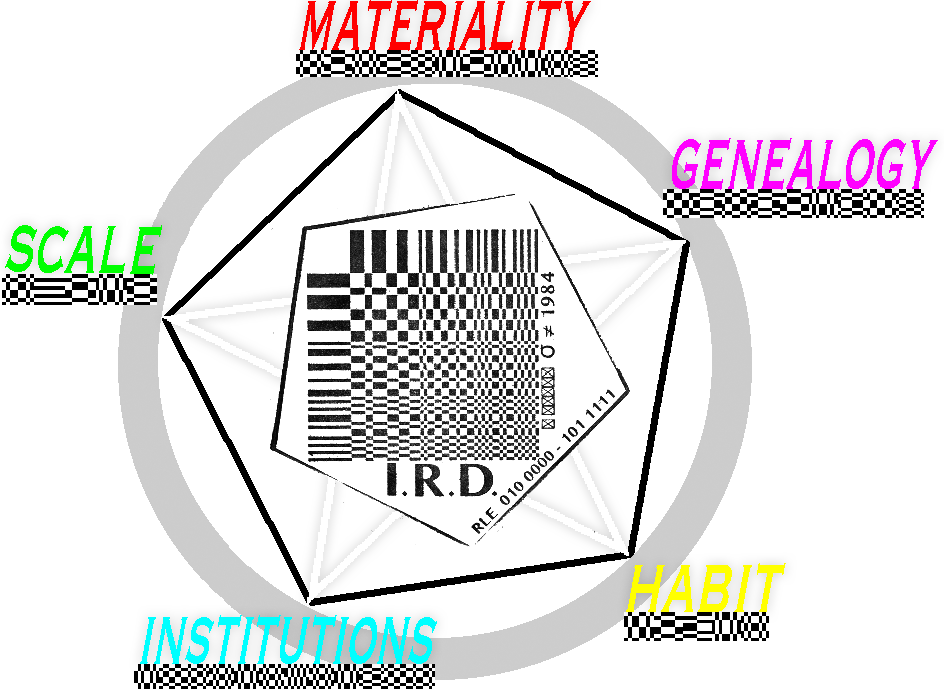
 .: selfportraits :.
How can we explain the glitch as an unexpected, abnormal mode of operandi, when the artists working process and more importantly, what the artist aimed for was abnormal in the first place? In other words, can an intended error be erroneous?
.: selfportraits :.
How can we explain the glitch as an unexpected, abnormal mode of operandi, when the artists working process and more importantly, what the artist aimed for was abnormal in the first place? In other words, can an intended error be erroneous?
Most images have a header; the first lines of code that hold supplemental information about for instance the format, size, number of colors, and other information needed to display the image. When you save an image in the photoshop RAW format, you can choose not to include this data in the saved file (choose header=0).
These portraits are made by copy-pasting the RAW image data (saved with no header) of 2 photos together in TextEdit and then saving the photos as one file. Because the RAW image data was saved without a header, the computer didn't know the dimensions and other crucial information and thus wansn't able to construct the image out of the data on its own. When I opened the image in photoshop, the program asked me to insert this information manually.
This is the opportunity to 'glitch'! In the case of the 2 images above I fumbled around with the size (I made photoshop open the document in half the size of one of the original photos) and color channels.
What is interesting about this method is that it is completely reversible; it doesnt destroy or harm the pictures original data in any way (although I would not recommend doing this with an original photo). I actually know exactly what is wrong with the file (I deleted the header data and gave photoshop wrong information - I bent it).
This kind of glitching (I dont know if I would even call it that) is more like a bug hug, it has a tendency towards design rather then a magical obfuscated, not understandable glitch that I normally make.
I go out of my way to make this point, because I have my reservations about the description of the glitch art flickr pool, especially where it states:
"Please only post images that have had authentic digital glitching through computer or digi-cam error. This includes databent images (eg. inserting randomness with a hex editor)."
If there is a spectrum of ('designed to accidental') glitch art, then I would locate databending inside the outside of this spectrum.
░░░░░░░░░ ░░░░░░░░░ ░░░░░░░░░ ░░░░░░░░░ ░░░░░░░░░ ░░░░░░░░░



1 comment:
I completely agree that intentional databending does not fall under the category of "authentic glitch". I actually hadn't noticed until now that the glitch art pool allows those images -- I've always thought that the description forbade them, and just no one paid attention to it.
Post a Comment